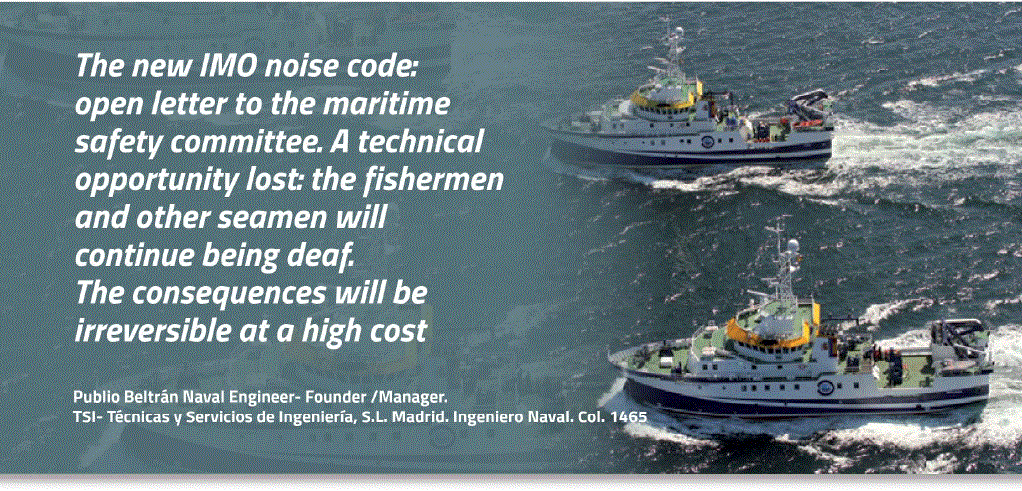More than thirty (30) years have passed since the appearance of the Code IMO Resolution A.468 (XII) until the adoption by Maritime Safety Committee on 30th of November 2012 of the Resolution MSC. 337(91). The Code of Noise Levels on board Ships. As mentioned, this new “Code” has been adopted to fulfil the recognised need to establish mandatory noise limits in the different spaces of the ships, and based on the experience gained since the adoption of the Resolution A. 468(XII), with regard to noise control and allowable exposure levels. This new trend is essentially based on the Regulation II-1/3-12 of the International Convention for the Safety of Life at Sea (SOLAS) in 1974 as amendment adopted by the resolution MSC.338(91), concerning protection again noise. The aforementioned regulation II-1/3-12 states that the ships shall be constructed to reduce on board noise and to protect personnel from noise in accordance with the Code of noise on board ships. This new Code will come into force on 1st of July 2014. In this large period of time, much progress has been made; especially in the topics of noise and vibration on board “all types of ships” as well as the outdoor noise generated by them, which especially affects the environment and the marine life. Connected to this, the new “Green Policy” of the EU for the reduction of the environmental impact of all types of vessels has been generating new Directives that shall affect the Shipbuilding Industry. As a direct consequence, and focusing only on protecting the health of all the seamen on board all types of ships again noise, the corresponding Directives have become local laws of the Member States, mandatory for Ship-owners and Sailors. In parallel and obeying market requirements, the optional Noise and Vibration Comfort Class Notations of the different Classification Societies have been implemented in most of the Passenger Ships, for both Passenger and Crew spaces. Likewise, many sensitized Ship-owners have decided to request stricter noise limits for their commercial ships to attend the local Flag Requirements. Besides, in this demanding scenario, the noise and vibration consultants and the Shipbuilding Industry have had to move forward on providing solution to fulfil these requirements. Based on real cases of sophisticated and commercial ships, it has been proved that the compliance with the strictest requirements, including those concerning the Underwater Radiated Noise (URN) by the ships, is achievable. In this independent consultant’s opinion, with 37 years of experience solving noise and vibration problems on board ships and industry during all his professional lifetime, the new IMO Noise Code appears as politically or diplomatically correct but technically obsolete, limited, unfair, source of commercial unbalances and, more seriously, not able to fulfil the aim of its definition: to protect personnel again noise on board ships. In order to avoid that these strong words or opinions presented here, with all the respect, could appear as demagogic, in the present report the technical reasons and evidences supporting them are presented… To read the full Review please click here: The New IMO
The New IMO noise code: Open letter to the maritime safety committee. A Technical opportunity lost: the fishermen and other seamen will continue being deaf. The Consequences will be irreversible at a high cost
by TSI SL | Jun 26, 2019 | Analysis, Diagnosis and Monitoring Systems, Maintenance and Reliability Engineering, Marine, Navy, News, News | 0 comments

